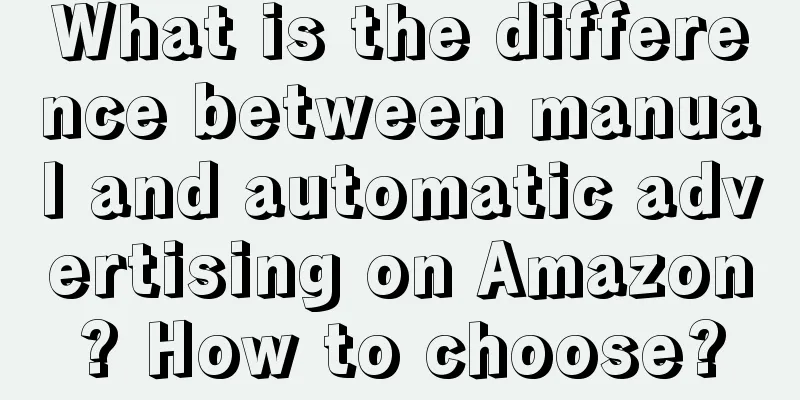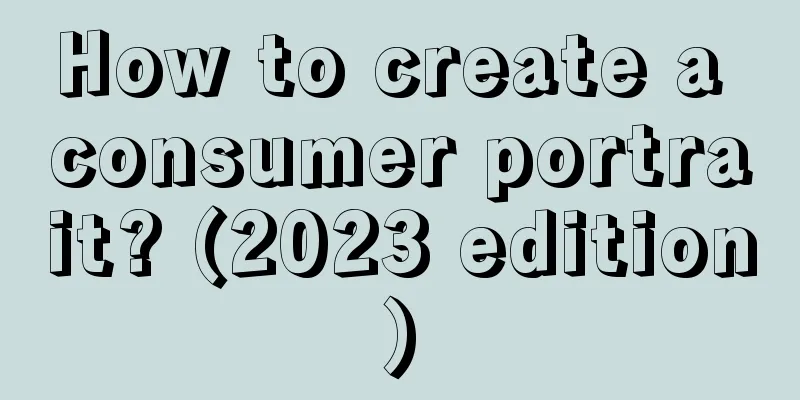How does NIO, the "Haidilao" of the car industry, conduct private domain marketing?

Electrification is the first half, and intelligence is the second half. This is the consensus of automakers. The development of intelligent technology is also constantly promoting the iteration and upgrading of automobile marketing models. With the popularization of software and hardware such as mobile apps and smart car machines, car companies have high-frequency user touchpoints for the first time in addition to selling cars. The user's car usage cycle of years has given great room for imagination of the value of these touchpoints, but it also brings great challenges: how to make good use of these touchpoints to maintain user stickiness? How to create revenue and brand value through interaction with users? The "new force" brands born in the era of intelligence have explored this issue more advancedly. Ideal uses the in-car entertainment screen and smart assistant as a major selling point; Xiaomi, a cross-border car manufacturer, integrates mobile phones, smart home and other businesses to gradually establish a "people, cars and homes" ecosystem. NIO, founded by Li Bin, who also has an Internet background, took a different approach and created its own lifestyle brand "NIO Life", which cooperates with Niuwu and online communities to achieve experience innovation throughout the user's life cycle. Since its establishment in 2018, NIO Life has shipped a total of 23 million original design products, with 8 first-level categories such as clothing, outdoor, home, food and beverages, and many popular products have been out of stock for a long time. During the Mid-Autumn Festival last year, NIO Life sent red wine as a gift to every NIO user, which also became popular on social media. While maintaining the relationship between the brand and old users, it also helped many potential users to "plant grass". So, as a car company, why does NIO want to cross over and become a lifestyle brand? How is NIO Life different from other car brands' "mall"? What is the secret to the success of NIO Life and NIO's private domain operations? At the "Breaking Boundaries 2024 Knife Annual Brand Effect Summit", Chloe Zhang Chutian, head of NIO Life, reviewed the brand's journey from 0 to 1 and from 1 to 10, hoping to inspire you. Here is what Chloe shared: Cars are no longer a one-time dealMany people are curious about why a car company like you would cross over into the lifestyle business. This can be explained from two dimensions. First, the logic of the automotive industry has shifted from selling "products" to "experiences."Around 2015, with the innovation of technology, the automotive industry entered the "3.0 era". The 3.0 era is a concept that contrasts the traditional media era of the 1990s and the Internet era after the millennium. Based on the mobile Internet, automobile brands and users in the 3.0 era have a platform for direct communication. Such communication has changed the basic logic of the industry. The relationship between brands and users has changed from a simple buying and selling relationship to a relationship where users can directly participate in brand building and even co-create with brands. Therefore, business innovation has changed from simple hardware and software innovation to full experience innovation. Brands need to polish not only products, but also experiences. Second, from car-centric to people-centricIn the 3.0 era, the relationship between brand and user is the origin of all the businesses of car companies. The business that used to be vertically extended with car as the center has become horizontally extended with people as the center. With the mobile Internet, we have the conditions to connect with users at all touch points throughout the user life cycle, making it possible to do lifestyle business. Only in this way can we have the opportunity to interact with users frequently. This is one of the reasons why we established NIO Life: NIO is a user-oriented company. We get to know users through cars and enter their lives. We also want to impress users with high-quality services and provide users with more different experiences through different online and offline touchpoints. According to data from the research organization IHS, the life cycle of a new car purchased by a new user is 79.3 months, or about 7 years. During this period, our cars, services, digital touchpoints and lifestyles generate different values at different stages and in different scenarios. By November 25, 2024, the tenth anniversary of NIO, we will have 650,000 car owners and more than 10 million registered App users. These user fans and friends and family around them frequently interact with our brand in online and offline communities. You can imagine how much room for imagination NIO Life has in such a high-frequency private interaction process. From 0-1, do what you can, from 1-10, don't do what you can'tThis year (2024) marks the sixth year of NIO Life. During the entire brand building process over the past six years, we have encountered different challenges and solved different problems at different stages. The first is from the 0-1 stage. The core challenge is to establish user mind and tell users what we are.But we found that many users initially thought we were just a car peripheral. Rather than telling users what we are, the problem we face is letting users know what we are not. So how do we change the user's mind? Back to our positioning - an original design lifestyle brand, design is the foundation and the key to changing the user's mind. So at this stage we did two things: 1. Gather design resources and build design capabilities.Currently, we have more than 650 design resources around the world, including well-known designers, emerging designers, and even students from art schools. For example, in the first year of NIO Life’s establishment, we cooperated with Hussein Clalayan, a well-known designer known as the “Picasso of the clothing industry”, and released 29 products. This was also Hussein Clalayan’s first show in China. In 2020, we collaborated with Central Saint Martins College in the UK on a project to collect students' works for commercialization. During that period, more than 100 students from more than 20 countries contributed more than 300 designs, and finally 7 designs entered the NIO community crowdfunding. This seems to be time-consuming and laborious, but users will be deeply involved in the process. The value of our project is not just the GMV income from crowdfunding. In the long run, the ROI is very high. 2. Make the design perfect and improve the design level of the teamEach of our products has to go through 2-3 rounds of proposals, with at least 6 plans. Up to now, NIO Life has tens of thousands of plans that died in the cradle. Behind the birth of any hit product, there are dozens of abandoned plans. For example, our popular super-model cup is still very classic and timeless, but the production process was very painful. From the structure, appearance design, to the way to open the lid, the team went through 6 rounds of concept iterations and polished it for a year and a half. There was a detail in it. In order to hide the very small injection point on the lid in an invisible position, it took us 4 months. There are many cases like this. During this process, many products won awards, and users gradually realized that we are different from other automotive peripheral products and gradually recognized the design and quality of our products. From stage 1 to stage 10, the number of users is increasing, but we cannot meet all the needs of users. How to make trade-offs between different categories? How to achieve a balance between user needs, product experience and team capabilities? At the beginning, we tried the product selection models adopted by many brands. For example, we put DJI speakers on the shelves, and the initial response was very good. But we soon found that this was not suitable for NIO Life. First, users often compared prices on other platforms; second, the after-sales service was very heavy and the experience was poor, so we cancelled the product selection business. We also tried digital products, which were highly sought after, but the technology iteration in this industry is very fast, and our design cycle cannot match the technology iteration cycle. Our market size is far less than that of the top players, and we have no price advantage. No matter how well these products sell in the community, users always have better choices, so they are not suitable for us in the long run. So what is suitable for us? In 2020, we thought of food, which is a very high-frequency category. Now it has become the first category that users like to recommend to their children or friends. Another example is wine, which is the most suitable category for NIO Life. On the one hand, it fits well with the lifestyle represented by our brand. Secondly, there are many talented people in the NIO community. Many users who understand wine can deeply participate in brand building and drive other users to learn related knowledge. During this stage, we realized that we cannot do everything and do not have to meet all demands. We will only enter this category when industry characteristics, user needs and team capabilities are met. Decisively give up what you are not good at and focus resources on the parts that can provide value to users. This is efficiency. In the next stage, if we want to go from 10 to 100, the challenge we face is continuous innovation and creating something out of nothing. During this stage, we need to constantly mobilize users, let them become designers, experience officers, models, photographers, etc., and co-create with us at different stages of the product life cycle. The better you treat old users, the higher your ROINext, let me tell you the story behind our “Send Red Wine During Mid-Autumn Festival” event.This activity stems from our deep thinking about user relationships. We firmly believe that efficiency itself is not simply about reducing costs, nor is it about blindly pursuing GMV, but about creating efficient links and digging deep into the needs of the crowd. Instead of spending money on advertising, it is definitely more efficient to spend money on users, and the ROI is also higher. First of all, NIO Life has been working in the wine category for four years. Whether it is product design, wine selection, or contract fulfillment, the entire chain is relatively mature, and we do not need to pay an extra premium. As the user base expands, the act of giving away wine will not only increase user satisfaction with the brand, but will also spill over to the brand communication level. Moreover, within the NIO community, we have many interactive design games based on NIO Life, such as blind boxes, crowdfunding, etc. These interactive games within the community can bring emotional premium, which is one of the reasons for generating value spillover. So our calculation logic is this: although it is not cheap to send wine to each user, in this process, we have various forwarding interactive links inside and outside the community online, and users can send it to their friends, or post it on social media to activate more potential car owners; offline, there are countless Mid-Autumn Festival offline activities and social test drive activities in Niuwu and NIO Centers across the country. These activities not only attract potential car owners, but also bring traffic to NIO Life. In the big picture, this activity is quite cost-effective. Since the establishment of NIO Life, we have been deeply engaged in original design, doing what we should and shouldn't do in product selection, and giving gifts to old users. Behind these seemingly inefficient things is our thinking about the long-term relationship with users. There is no shortcut in this matter. Providing good products, good services, and a good lifestyle is the best and only solution to improve efficiency. |
<<: What is a data analysis project and how to do it?
>>: After working as a food delivery agent on JD.com for half a month, Meituan’s orders exploded
Recommend
At what amount does Shopee start to charge tax? What is the tax policy?
Merchants who open online stores need to pay taxes...
From Southeast Asia to Japan and South Korea, Mixue Ice City's overseas expansion
Recently, many netizens posted photos of the grand...
How is the UK Amazon market? How to choose products on UK Amazon?
Amazon is the best developed cross-border e-commer...
Revealing the current situation of short drama casting: There are so many beauties but it is hard to find a top boss, and the daily salary of the "top stars" exceeds 10,000 yuan
The popularity of short dramas has brought a numbe...
How often does Amazon update its best sellers? Why does the organic ranking drop?
Merchants who open stores on Amazon will pay atten...
Shopee Full Hosting Service FAQ
The Shopee Consignment Service (SCS) Seller Center...
How can an amateur become a blogger on Xiaohongshu? Refer to these 3 ways to create a blogger account
When operating an account on Xiaohongshu or before...
Can I continue to optimize Shopee products? How to operate?
Nowadays, although the profits of cross-border e-c...
12,000 words丨Perhaps the most practical operation upgrade guide on the entire network
As an operator, with the promotion of different le...
How to set up Shopee logistics? What are the procedures?
When you open a store online, you must understand ...
How long does it take for a new Amazon customer to place an order? How can I place an order quickly?
As the Amazon platform continues to grow, more and...
What categories does Shopee sell in different countries? How to operate Shopee?
Now many of you are doing cross-border e-commerce....
The trend of virtual anchors selling goods is on the rise, but who can make it to the end?
In this article, the author analyzes the advantage...
How to settle cash on delivery payment on Lazada? FAQ
Lazada is also a kind of cross-border e-commerce p...
How should the performance appraisal of Xiaohongshu’s media team be formulated and managed?
In Xiaohongshu, the media is a position with a wid...









